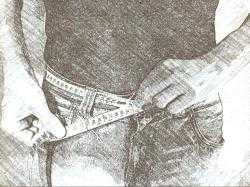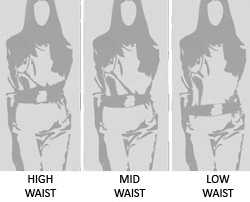- Amar
- Tutorial and Guides
- 0 likes
- 7808 views
To ensure the best fit when purchasing a belt online, accurate measurements are crucial. Your belt size differs from your pants or waist size.
Determining your BELT SIZE involves selecting the size for length when placing your order. The BELT LENGTH from end to end is not used for measurement purposes due to the buckle's width and additional inches of leather.
Typically, a belt should measure 10cm/4 inches for standard belts with five holes and 12.5cm/5 inches for belts with three holes (Hermès standard). When in the widest belt hole, it should tuck under your first belt loop.
There are different methods to measure your belt size based on your wearing habits and belt/buckle types.
OPTION 1 - using your EXISTING BELT
ON BELT STRAPS with STITCHED/CLASSIC BUCKLES
Using a belt you own, note the hole that fits you comfortably:
Carefully stretch out the belt on a flat surface and, depending on the buckle type you have, tape measure from either the prong or the inside of the buckle where the buckle tongue ends ( A ), to whichever hole is currently being used ( B ) as shown below.
Basically, the measurement you need to provide us with will be the sum of two dimensions: the “BELT SIZE” (the length from the fold in the leather belt to the main hole you will use) PLUS the “BUCKLE LENGTH” (the length from the fold in the leather belt to the hook in the buckle).

OPTION 1 - using your EXISTING BELT
ON BELT STRAPS with DETACHABLE BUCKLES
Using a belt you own, note the hole that fits you comfortably:
Just remove the buckle and tape measure the distance between the buckle hole ( A ) where the prong goes, all the way to your favorite hole ( B ).

OPTION 2 - withOUT BELTS
Making Sure you are NOT wearing a belt while doing this, put a measuring tape through your pant/skirt loops and wrap it around your waist. Because you don’t want your new belt to interfere with your breath, inhale deeply and then measure your girth.
This measures your bodily circumference. This is the measurement you need to provide when ordering your new belt.

OPTION 3 - withOUT BELTS
Tape measure your waistline according to where you intend to wear the belt ( waist, hips or somewhere in between ):
- MID / REGULAR WAIST: around your natural waistline
- LOW WAIST: around 2-3 inches below your natural waistline
- HIGH WAIST: around 2-3 inches above your natural waistline
For more accurate sizing, we strongly suggest you to take your measurements WITHOUT wearing garments and eventually add one or two inches. The size to use for length when placing your belt order will equal your bodily circumference PLUS the girth of your underwear, shirts, pants or skirt.

OPTION 4 - withOUT BELTS for MEN ONLY !
(for MEN ONLY!! – LADIES: please disregard this section and follow directions on Option 2 or 3)
Based on your pants size, pick your belts one or two sizes larger to get a good fit: if you wear a 36” trouser waist, a belt labeled 38"-40” will probably be in the right neighborhood.
Remember, the 38”-40" will be the measurement from where the buckle connects to the belt to the hole currently being used. This works some of the times, but it is not the most accurate way.
